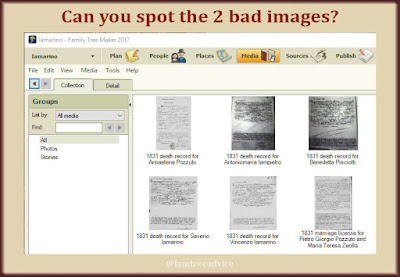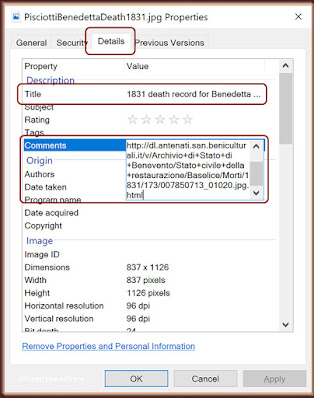It's Time to Give a Whole New Meaning to 'Trimming the Tree'
In my newbie genealogy days it was a ton of fun to find people in the census. I'd trace a family through the years. I'd add names and facts and build out the family with glee.
Before long, I had 8 generations of my great uncle's wife's family. I don't know my great uncle's wife. I never met my great uncle! I had no plans to do any research for this family. And I had borrowed a lot of the people from other trees.
Why keep these hastily recorded people in my tree? I want my tree to be more professional than that.
I've written here before about lopping 600 or so people from my tree. Their only connection to me was my brother's wife. So I carefully separated them all out into their own tree for my sister-in-law.
Now it's time to prune more people who don't belong. This will improve the value of my family tree.
I deleted my great uncle's wife's ancestors one at a time. I checked first to see if they had a document image attached to them. If so, I detached the image, deleted it from Family Tree Maker's media collection and from my folders. Then I deleted the person, their spouse and children.
I did this carefully so I wouldn't leave any detached people floating in my family tree file.
That was a good family to delete. They had little or no documentation. I didn't know anything about them. They were not my people.
Here are some ways to decide who to cut from your family tree.
Where Did These People Come From?
Start by scanning your tree for a name you don't recognize. Can you find their connection to you? If the relationship is absurdly distant, maybe you should cut their branch.
Take a look at your source information for them. Did you find these facts yourself, or did they come from someone else's tree? Do you have good sources? No sources?
If the sourcing is unreliable or non-existent, maybe you should cut their branch . Give it some thought before cutting. Do you think you might ever be sorry about your decision?
The way I see it, if the names didn't have good documentation, they weren't worth much to my family tree anyway. If I did want to build out that branch, I'd rather start from scratch and do it based on evidence.
What Can These People Offer My Family Tree?
 |
| There are some very unofficial sources hiding in my tree. |
With more than 19,000 people, my tree has tons of ridiculously distant relatives. Picking a person at random, I find she's the mother-in-law of the wife of the father-in-law of the husband of the sister-in-law of my 2nd great grandfather. In short, she's related to me through the 1st wife of my 2nd great grandfather.
She's not my relative, but I'm keeping her. I've met a few people online who are related to my great grandfathers 1st wife. Plus, my ancestors in their little Italian towns were basically all related by blood or marriage. That's kinda my thing. That's what my tree is all about: finding all the ties that bind these towns together.
Because that's my thing, I'm not deleting any of my 18th- and 19th-century Italians.
Look for Strange Sources
Looking at my long list of sources in my family tree software, I see a few unofficial sources. They're named for the family tree I looked at when adding people to my tree.
These days I avoid looking at other people's trees, but I used to follow leads.
One of these family tree sources is attached to 22 facts. This might be a branch I should cut.
I'll choose someone from the list of 22 facts and use Family Tree Maker's Relationship Tool to see their relationship to me. Of course. They're related to my 2nd great grandfather's 1st wife again! A couple of generations of the family are in my ancestral hometown, and then they came to New York state.
 |
| Family Tree Maker shows me every fact associated with a particular source. |
Instead of deleting this branch, I'm going to flag the descendant who was born in America. I want to replace as many "Somebody's Family Tree" sources as possible with official sources.
Round Up the Out-Laws
Have you put together a branch for your cousin's husband, only to have your cousin divorce her husband? Do you care about keeping that branch?
My new policy is to keep only the parents of in-laws. I have exceptions, of course. I've had fun building out my 1st cousin's wife's tree. (I'm a sucker for Italian ancestors!)
Here's what I'd suggest to you. Give some thought to what you want from your family tree. If you're doing this just for the fun of it, then set your own rules and have a blast!
If you're more like me, and you've found a true passion in your tree, focus on that. Are you working toward applying to the Sons or Daughters of the America Revolution? Are you trying to map out our ancestors' migration paths so you can follow in their footsteps? Are you trying to fill your living room wall with a cool display of your immediate ancestors?
Whatever you hope to achieve…
- cutting the fat
- improving the sources and
- deciding where to focus
will make your family tree stronger.
And speaking of trimming the fat:





















